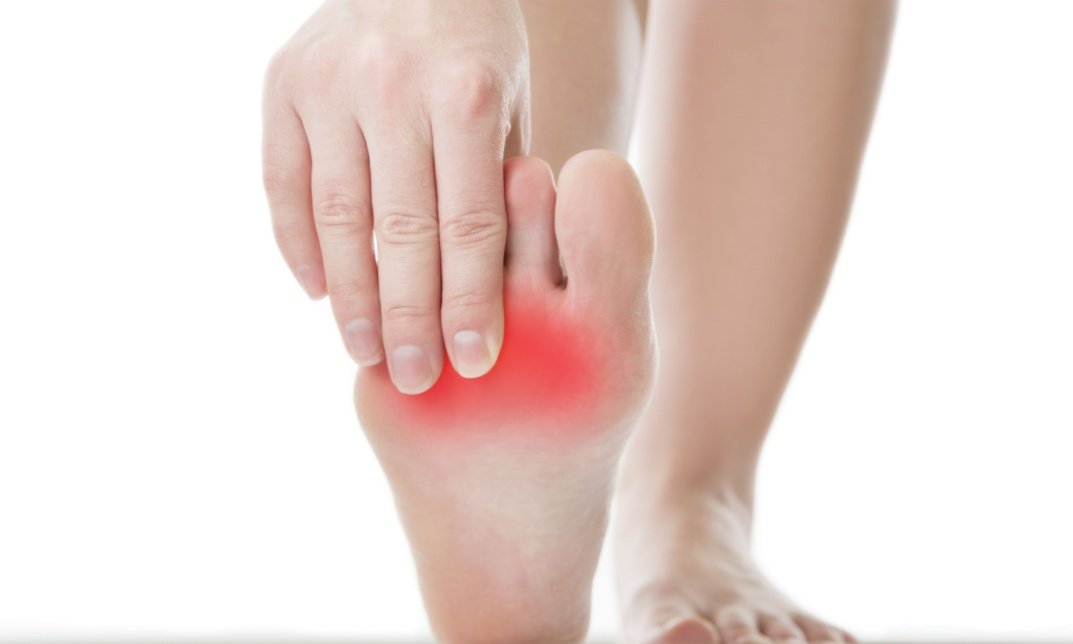No products in the cart.
Do your feet ache after a long day? If so, you must have considered going to a ‘foot doctor’. However, you may have noticed there are two types of foot doctors: Chiropodists and Podiatrists. Many people have confusion surrounding these two terms for foot care professionals.
This blog post will clear your confusion and help you step confidently towards healthy feet. We’ll explore the world of chiropody and podiatry. Uncovering potential differences and ultimately revealing they are more connected than you might think. There are ultimately no big differences between chiropody and podiatry. However, some nuances might be worth looking at.

Chiropody vs Podiatry: Definition
Chiropody is the term traditionally used to study and treat foot and ankle conditions. It has a long and interesting history, originally encompassing the care of both hands and feet. Today, however, it primarily focuses on the lower limb extremities.
Podiatry is a branch of medicine dedicated to studying, diagnosing, and treating conditions affecting the foot, ankle, and lower leg. Podiatrists are highly trained medical professionals who can address various issues.
Chiropody vs Podiatry: Key Responsibilities
Chiropodists and podiatrists often lead to some confusion. They are both professions that deal with the treatment of the feet and lower limbs. However, their roles and qualifications can vary depending on the country. Let’s jump into what chiropodists and podiatrists do.
Chiropodists:
Chiropodists are healthcare professionals specialising in diagnosing and treating foot and lower limb conditions. Chiropodists are still prevalent and perform a wide range of services, including:
- Routine Foot Care: This includes treating common foot issues such as corns, calluses, ingrown toenails, and fungal infections.
- Orthotic Prescription: Chiropodists often prescribe and fit custom orthotic devices to correct foot abnormalities and alleviate pain.
- Wound Care: They manage and treat wounds and ulcers, particularly in patients with diabetes or poor circulation.
- Health Education: They advise on foot care, footwear, and overall foot health to prevent future problems.
Podiatrists:
Podiatrists are highly trained medical professionals who specialise in diagnosing and treating conditions affecting the feet, ankles, and lower legs. The term “podiatry” is widely used in the United States and other countries. Podiatrists undergo extensive education and training, including a Doctor of Podiatric Medicine (DPM) degree. Their scope of practice includes:
- Surgical Procedures: Podiatrists are qualified to perform surgeries related to foot and ankle problems, such as bunion correction, fracture repair, and tendon surgery.
- Sports Medicine: They treat sports-related injuries, providing rehabilitation and prevention strategies for athletes.
- Advanced Diagnostics: Podiatrists use advanced imaging techniques like X-rays, MRIs, and ultrasounds to diagnose complex foot and ankle conditions.
- Chronic Disease Management: They play a critical role in managing foot complications arising from chronic conditions like diabetes and arthritis.
What is the difference between podiatry and chiropody?
There’s no real difference between chiropody and podiatry in terms of the services offered or the practitioner’s expertise. Both chiropractors and podiatrists are qualified healthcare professionals trained to diagnose and treat various foot conditions.
podiatry
- Routine Foot Care: Treatment of common foot issues such as corns, calluses, and ingrown toenails.
- Orthotic Management: Prescription and fitting of custom orthotic devices to correct foot abnormalities and alleviate pain.
- Wound Care: Management and treatment of wounds and ulcers, particularly in patients with diabetes or circulatory issues.
- Biomechanical Assessments: Analysis of gait and foot biomechanics to diagnose issues related to foot alignment and function.
- Health Education: Provision of advice on foot care, footwear selection, and overall foot health to prevent future problems.
Chiropody
- Surgical Interventions: Performance of surgical procedures to address complex foot and ankle issues, including bunion correction, fracture repair, and tendon surgery.
- Sports Medicine: Treatment of sports-related injuries and provision of rehabilitation strategies for athletes.
- Advanced Diagnostics: Use of imaging techniques such as X-rays, MRI, and ultrasound to diagnose and manage complex foot and ankle conditions.
- Chronic Disease Management: Management of foot complications arising from chronic conditions like diabetes, arthritis, and peripheral vascular disease.
- Comprehensive Care: Holistic approach to foot health, addressing not only the immediate foot problem but also its underlying causes and related health concerns.
Conclusion
Chiropody and podiatry focus on foot and lower limb health. They have different scopes of practice and levels of training. Chiropodists provide routine foot care, like treating corns and calluses. They also fit custom orthotics and manage wounds.
On the other hand, podiatrists offer a wider range of services. These include surgeries, advanced diagnostics, and managing chronic conditions like diabetes and arthritis. They have more extensive medical training, often including surgical qualifications.
Understanding these differences helps you choose the right professional for your foot care needs. If you are interested in getting more information about podiatry, then enrol in our podiatry course at Wise Campus. You will gain the best experience from our online e-learning platform.






